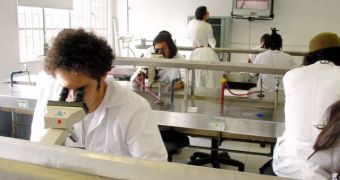According to a new, extensive study of fossils left behind by microorganisms living billions of years ago, when life first appeared, it would seem that early life not only replicated and multiplied, as first believed, but that it was also united to form the basis for the appearance of the most developed organisms in the world today. Mostly responsible for the fact that the Earth now has oxygen in the air are prokaryotes, nucleus-less cells made from self-replicating chemicals, Wired reports.
Prokaryotes are usually divided down into five subcategories: bacteria, archaea, clostridia, actinobacteria and gram-negative bacteria. Together, these organisms represent the most diverse population of living things on the planet. They give researchers an almost never-ending number of new species and traits, which they can constantly analyze. When compared to the variety of these organisms, the animal and plant world pale in comparison.
Evolutionary biologists have known for a long time that mitochondria and chloroplasts, the structures inside living things that transform nutrients into energy, most likely came from gram-negative bacteria. In the distant past, when the eukaryotes first appeared, it is believed that some strains of prokaryotes were completely absorbed into them. Eukaryotes were the first single-celled organisms to exhibit a clearly defined nucleus, and to have a complex internal structure. From them, all other forms of life descended.
According to University of California in Los Angeles (UCLA) cell biologist James Lake, the author of the new study, it may be that the gram-negative bacteria group, which essentially allowed for life to appear on the planet, may have been formed by a combination of actinobacteria and clostridium. “If these results can be confirmed and extended, they would undoubtedly have a major impact on our ideas about both prokaryotic and eukaryotic evolution,” Dalhousie University cell biologist Michael Gray explains. He is best known for identifying the bacterial origins of mitochondria, but has not been involved in the new study.
The new hypothesis that Lake proposed appeared in the Wednesday issue of the respected scientific journal Nature, and was derived from a study of over 3,000 types of bacteria. The researchers used their genome sequences to run pattern analyses, which seem to point out that the merger took place billions of years ago. “People have always assumed that evolution works in a treelike manner. What we said was, let’s analyze things in a way that doesn’t assume the tree, and see what happens,” Lake says.
“We’ve known about the gram-negative bacteria for three scientific generations. We’ve been staring at them for a hundred years, and we never realized how they came about or what made them so different. Without them, we wouldn’t have eukaryotes as we do today,” he adds.

 14 DAY TRIAL //
14 DAY TRIAL //